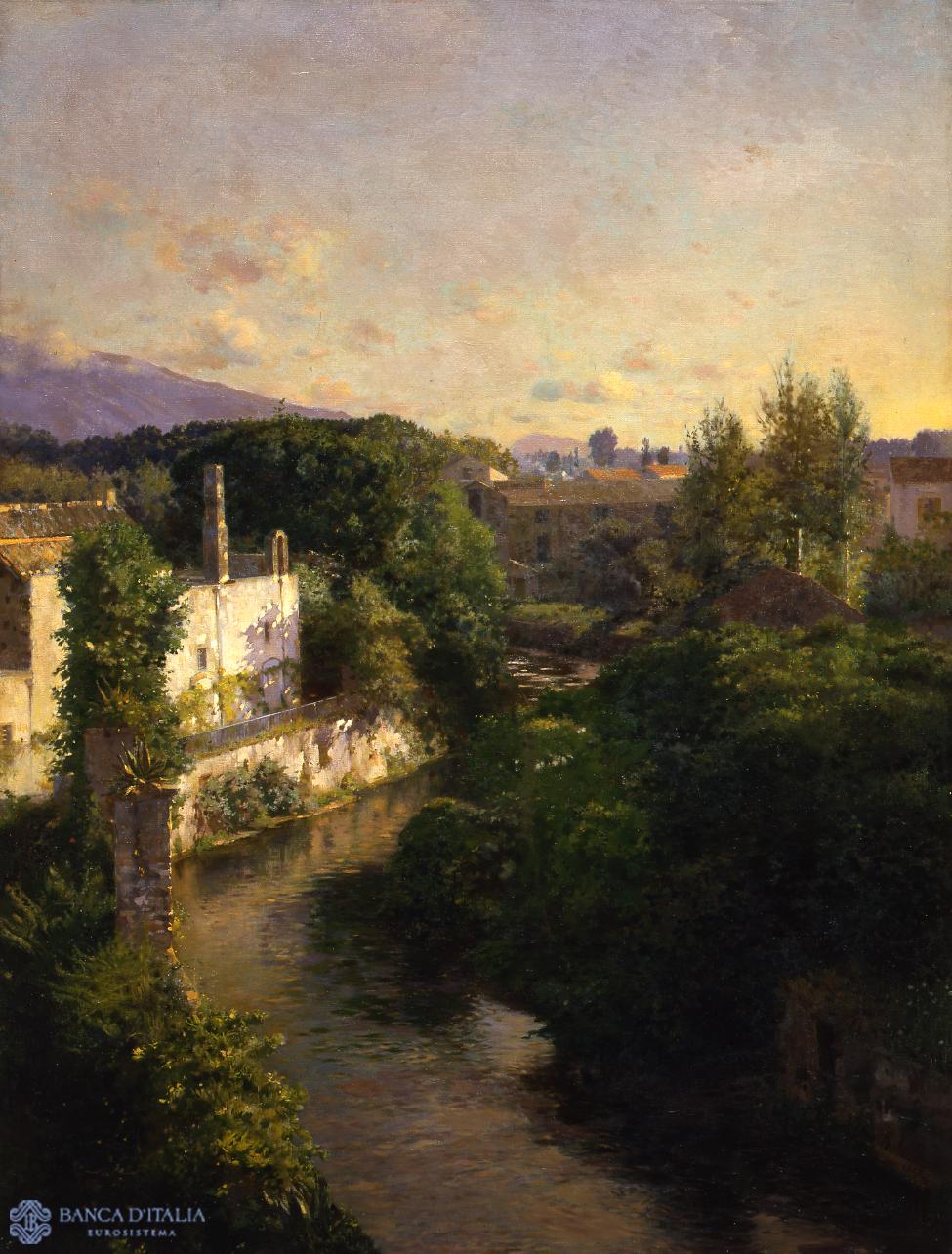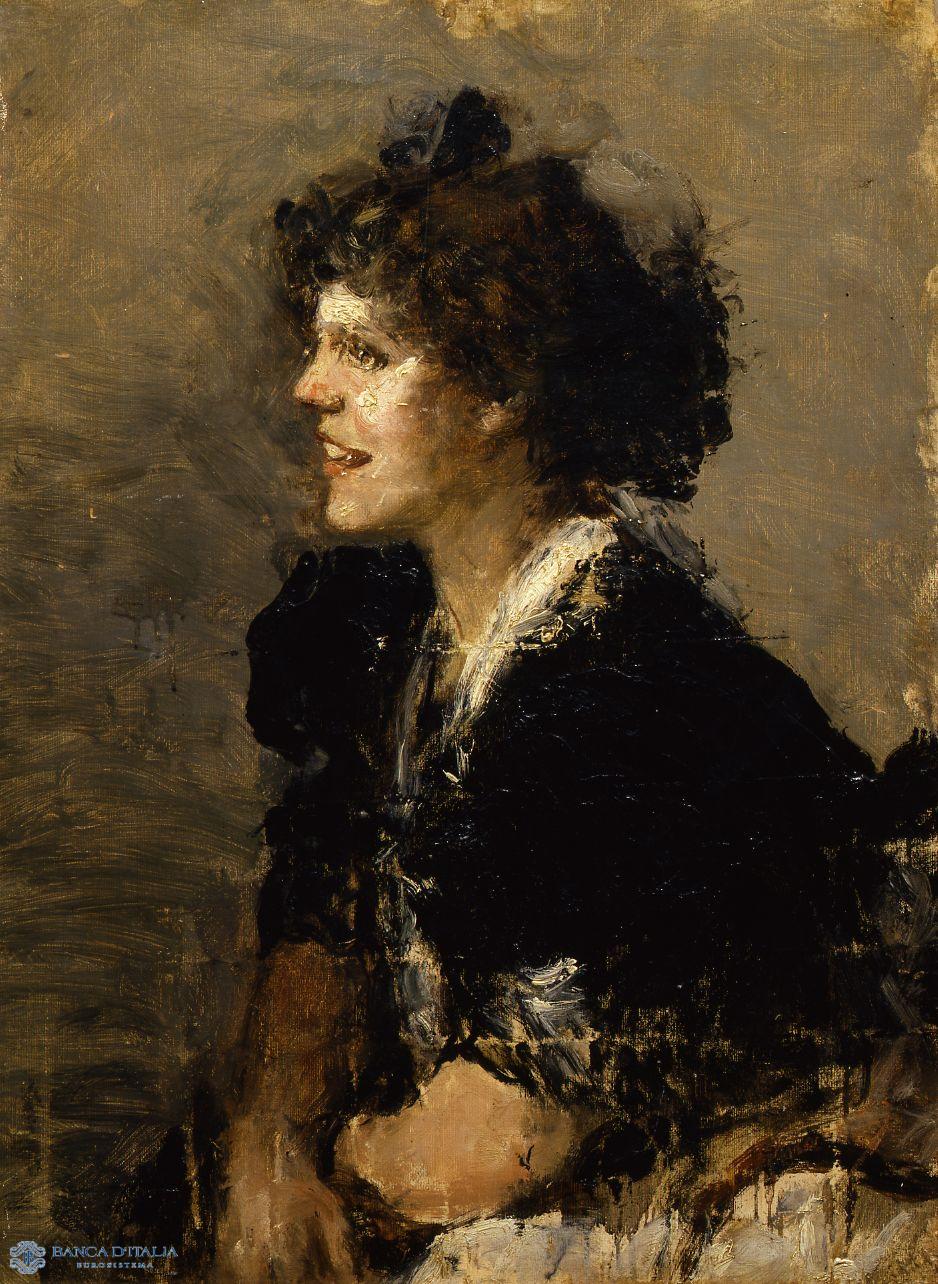The earliest appearances in Italy of what might be called “avant-garde” painting occurred with the Divisionist movement of artists like Previati and Segantini, who were born in the 1850s. But among their contemporaries were painters who were not drawn to Divisionist experimentalism and who would continue throughout their lives, extending to approximately the 1930s, to cultivate a traditional figurative style inspired equally by a striving for the “true” and permeated with a marked Naturalism. The “Verist” tendency, which had originated in the South with artists such as Domenico Mortelli and Giuseppe and Filippo Palizzi, would then encounter opposition in movements like the so-called Resina School (De Nittis, De Gregorio, Leto, Cecioni) and in the Macchiaiolo movement, whose greatest exponent was Fattori. The Realist and Verist movement spread from the South towards the North under the banner of a cult of the “true” whose scope extended from optical-perceptive inquiry to social realism and overflowed into celebratory or moralizing themes representing a new awareness of the nation’s life and reality. Sombre atmospheres and grey shades gave way to plein-air light in a quest for tones and “values”, shared in their way also by the artists who appear in this section and were not influenced by the Macchiaiolo movement or Impressionism.
Figurazione di inizio secolo
Early Twentieth-Century Figurative Painting
Works of art

Ritratto del Marchese Antonio de Viti de Marco
In his official portrait-painting Antonio Mancini is generally more closely bound to academic schemata and forced to rein in his imagination and control the superabundance of his impastos. In this portrait he nevertheless achieves a noteworthy painterly result, clearly taking the Venetian school of Titian and Tintoretto as a model.
Painting
19th century AD
Portrait

Pepiniello
In this fine painting Mancini offers us proof of his wonderful ability to weave a canvas of light and shadows in which the figure pulsates, conveying a perception so lively and immediate that it almost appears indefinable at first sight.
Painting
20th century AD
Portrait

Paesaggio del Sarno
This view of the Sarno river in Campania depicts the places frequented by Rubens Santoro during the period of his studies with Domenico Morelli at the Naples Fine Arts Academy, before he ventured northward without, however, abandoning his fine feeling for landscape.
Painting
20th century AD
Landscape

Ninfa: Pastorale
In 1893 Sartorio wrote: “Landscape can be called a form of art for itself, and the theories of relations, thanks to the modern-day English and French and to photography, are in the public domain. I have no great fondness for jumbled, large pictures, because I think they are ill-suited to the Virgilian intimacy and freshness of this art, which is great precisely because it can infuse a great serenity of feeling with just a few but serenely true lines and colours.”
Painting
20th century AD
Landscape

Giochi in riva al lago (o anche Giorno di Festa)
More than a final work, this appears to be a study or note for constructing a composition around the boldly foreshortened image of the point of dark land projecting onto the water. The black strip of land on which the boat is drawn up is extended in the silvery light of the lake. A group of children – three little girls and two boys – are running towards the water.
Painting
20th century AD
Figurative

I fiori bianchi
The lad’s immature but attentive face emerges from the dark, the effect stemming from the contrast between the light and the dark tones. The branch of white flowers rings out on the jet-black jacket. Beneath a soft mass of curls enlivened by highlights, the lad’s head is bent slightly and turned towards something or someone.
Painting
19th century AD
Figurative

Felicità
The figure, illuminated by the touches of light of her blouse, stands out in black against a lighter background with vivid immediacy. The woman’s beautiful unruly locks are shaded towards chestnut brown; the artist succeeds in rendering the softness and movement that animates her hair with a shiver of vitality that is communicated to her smiling face.
Painting
20th century AD
Figurative

La falciatura
A high horizon illuminated by a diffuse, southern light affords a glimpse of the contours of the hills in the background. The entire foreground is occupied by the scene of mowing in which a group of peasants are engaged. Two standing men are sharpening their scythe.
Painting
20th century AD
Landscape

Diana di Efeso
Part of Aristide Sartorio’s complex research into the various facets of artistic language, this work illustrates the aspect most closely associated with literary or mythological references, against the backdrop of the particular direction taken by Decadentism in Italy, above all within the Roman artistic scene.
Painting
Biblical - Historical - Mythologic

Cairo
In the 1920s Sartorio visited Egypt, Syria and Palestine at the invitation of King Fuad and did many landscapes, including this small coastal scene. In the foreground the shape of a fishing boat is depicted with rapid black strokes enlivened by two flicks of white.
Painting
20th century AD
Landscape

Bimba al sole
The use of light to animate colour, which flares up suddenly and then is attenuated in areas of shadow, was the core problem of Francesco Paolo Michetti’s artistic exploration from the first years of his training at the Naples Academy, when he attended the meetings of the Repubblica di Portici.
Painting
19th century AD
Portrait

